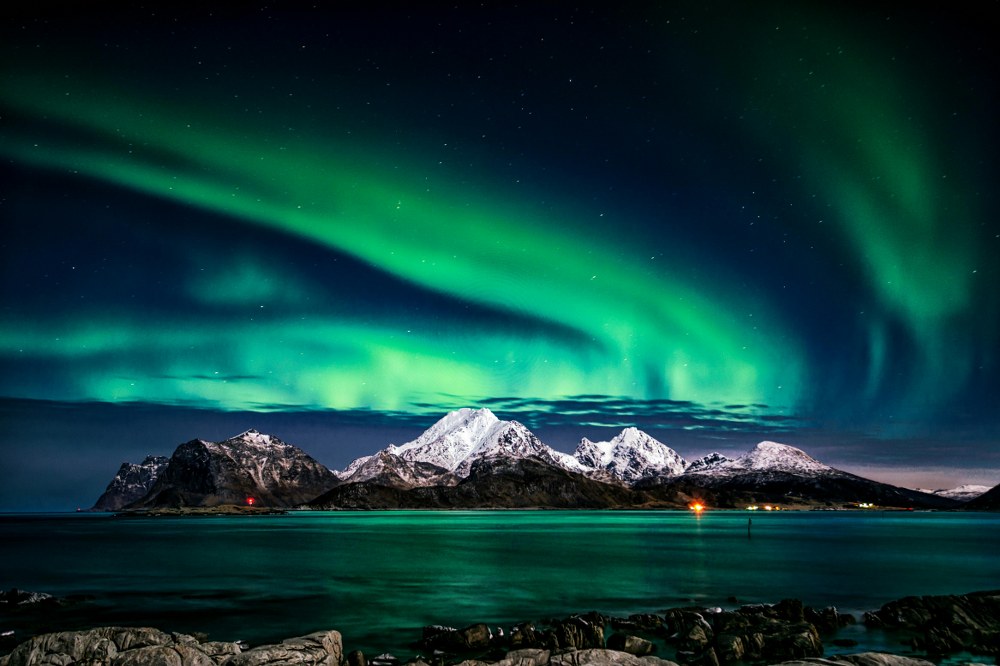The aurora borealis, commonly known as the northern lights, is a breathtaking natural phenomenon that has captivated humanity for centuries. From the scientific principles that govern its display to the myths and legends that surround it, the northern lights represent a rich tapestry of knowledge, culture, and wonder. This article delves into the science behind the aurora borealis, explores its cultural significance through myths, and captures the magic that draws people from all over the world to witness this celestial spectacle.
The Science Behind the Aurora Borealis
At its core, the aurora borealis is a result of interactions between the Earth’s magnetic field and solar wind—a stream of charged particles emitted by the sun. Here’s how the process works:
1. Solar Wind and Earth’s Magnetosphere
The sun continuously emits a flow of particles, primarily electrons and protons, known as the solar wind. When these charged particles reach Earth, they encounter its magnetic field, which acts as a protective shield. However, near the polar regions, the magnetic field lines converge, allowing some solar particles to enter the atmosphere.
2. Excitation of Atmospheric Gases
As these solar particles collide with gases in the Earth’s atmosphere, primarily oxygen and nitrogen, they transfer energy to these gas molecules. This energy excites the atoms, which then release light as they return to their original state. The different colors observed in the auroras depend on the type of gas involved and the altitude at which the interactions occur:
- Green: The most common color, produced by oxygen molecules at lower altitudes (around 100 to 300 kilometers).
- Red: Caused by high-altitude oxygen, occurring above 300 kilometers.
- Blue and Purple: Resulting from nitrogen molecules, typically found at lower altitudes.
3. Patterns and Shapes
The aurora borealis can take on various forms, including arcs, spirals, and rays, often moving and changing shape due to the dynamic nature of solar winds and the Earth’s magnetic field. The result is a dazzling display of light that can be seen in the night sky, typically in regions close to the Arctic Circle.
Myths and Cultural Significance
Throughout history, different cultures have woven the aurora borealis into their myths, news and stories, attributing various meanings to this mysterious phenomenon.
1. Inuit Legends
Inuit people of the Arctic regions believed the northern lights were the spirits of their ancestors dancing in the sky. They viewed the auroras as a sign of good fortune and prosperity. In some traditions, it was said that one should not whistle at the lights, as it could provoke the spirits.
2. Norse Mythology
In Norse mythology, the aurora borealis was thought to be the shimmering armor of the Valkyries, the warrior maidens who chose those who would live and die in battles. This connection to valor and bravery enhanced the mystique of the northern lights in Scandinavian cultures.
3. Other Global Interpretations
Across various cultures, the aurora borealis has inspired countless interpretations, from omens of change to divine messages. In Finnish folklore, the phenomenon was referred to as “revontulet,” or “fox fires,” believed to be caused by a mythical fox sweeping its tail across the snowy landscape, creating sparks that lit up the sky.
The Magic of Chasing the Northern Lights
The allure of the aurora borealis continues to draw adventurers, photographers, and dreamers alike to remote regions where the lights can be observed in their full glory. The experience of witnessing the northern lights is often described as magical and transformative.
1. The Best Locations
Certain destinations are renowned for their aurora-viewing opportunities. Locations such as Tromsø in Norway, Fairbanks in Alaska, and Yellowknife in Canada offer optimal conditions for viewing the northern lights due to their geographical positioning and low light pollution. Many travelers embark on guided tours, often venturing into the wilderness to escape city lights and enhance their chances of seeing the auroras.
2. Timing and Conditions
The best time to see the aurora borealis is typically during the winter months, from September to March, when nights are longest and skies are darkest. Ideal conditions include clear skies, minimal light pollution, and high solar activity, which can be tracked using various forecasting tools and apps dedicated to aurora watching.
3. The Emotional Experience
For many, witnessing the aurora borealis is a profound experience that evokes a sense of connection to nature and the universe. The swirling colors and ethereal movements of the lights create a moment of awe, often prompting reflections on life, spirituality, and the beauty of the world around us.
Conclusion
The aurora borealis is more than just a stunning display of light; it embodies the intersection of science, mythology, and human experience. From understanding the physics behind this celestial wonder to appreciating the cultural narratives that enrich its significance, the northern lights continue to inspire and enchant. Whether you are chasing the lights on a cold winter night or simply marveling at photographs from afar, the aurora borealis invites us to explore the mysteries of nature and our place within it. As we gaze up at the night sky and witness this magical phenomenon, we are reminded of the beauty and wonder that exists in our world.


